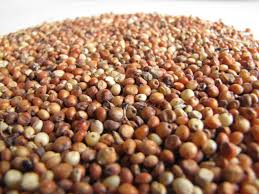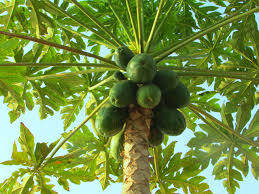
Sorghum (Sorghum bicolor (L.) Moench) is a cultivated tropical cereal grass. It is generally, although not universally, considered to have first been domesticated in North Africa, possibly in the Nile or Ethiopian regions as recently as one thousand (1,000) BC1. The cultivation of sorghum played a crucial role in the spread of the Bantu (black) group of people across sub-Saharan Africa.
Today, sorghum is cultivated across the world in the warmer climatic areas. It is quantitatively the world’s fifth largest most important cereal grain, after wheat, maize, rice and barley. In Africa, sorghum is still largely a subsistence food crop, but as report will show it is increasingly forming the foundation of successful food and beverage industries in Nigeria.
Nigeria is the second largest producer of sorghum, with the majority of domestic production used for household consumption/fodder. Sorghum is produced in virtually all the states in Nigeria, though some states produce more than others.
Some of states that sorghum is produced in large quantity in Nigeria include Plateau, Kano, Kaduna, Sokoto, Gombe, Bauchi, Zamfara, Benue, Kogi, Nassarawa and Taraba. The raw materials are also readily available.
Malt is the name given to a seed grain which is subjected to limited germination and dried under specifically controlled conditions of temperature and humidity. It is simply a dried sprout of a seed grain. Sorghum has a better malting characteristics than other cereals like maize, millet and rice.
Sorghum malt compares favourably with barley malt. Sorghum malt has found many application especially in brewing and food industries.
All breweries now use sorghum malt in production of their alcoholic beverages. Local alcoholic brews such as Burukutu, Pito and Oyika are made from sorghum malts. The non-alcoholic and confectionery industries is another important sector that utilize malted cereals in food formulation.
Sorghum is increasingly being used as a substitute for more expensive and imported raw materials. A major portion of sorghum grain currently utilized by Nigeria industries (approximately 200,000 MT) is used by the larger beer sector, followed by the non-alcoholic malt beverage sector. Currently, several brands of larger beer with major sorghum content are being marketed.
Historically, malt drink was used as food for children and the sick, but has since become a mainstream beverage consumed by people of all ages. More importantly, malt-based drinks have developed a reputation over the centuries for their nutritional value, a message that is attractive for manufacturers to carry across in today's climate of increasing health awareness.
The beer market in Nigeria was equal to 1.99 billion USD (calculated in retail prices) in 2015. Until 2025, the beer market in Nigeria is forecast to reach 6.20 billion USD (in retail prices), thus increasing at a compound annual growth rate (CAGR) of ten point forty-two percent (10.42%) per annum for the period 2020-2025. This is a decrease, compared to the growth of about 14.04% per year, registered in 2015-2019.
The average consumption per capita in value terms reached 11.29 USD per capita (in retail prices) in 2015. In the next five years, it grew at a compound annual growth rate (CAGR) of eleven point ten percent (11.10%) per annum. In the medium term (by 2025), the indicator is forecast to slow down its growth and increase at a compound annual growth rate (CAGR) of 7.66% per annum.
Nigeria’s brewing Industry is made up of market leader, Nigerian Breweries, second largest market shareholder, Guinness, followed by International Breweries, as well as Champion Brew.
The Nigerian consumers spent $2.29 billion (approximately N826.69billion) in 2019 on beer, a new report by Oxford Economics has shown. One of the most important trends on the beer market is the shift in consumer preference towards low and non-alcohol beers, as well as craft beers.
It has been established that sorghum malt compares favourably with barley malt. The high demand for the product is a result of the ban on importation of barley malt by the federal government in 1988.
Market research carried out in the breweries and food industries shows that there is abundant demand for sorghum malt. Based on research evidence, the total demand estimate of the brewery industry is eight hundred and twenty-five thousand (825,000) tons per annum while the total demand estimate for the food industries is two hundred and eighty thousand (280,000) tons per annum.






















